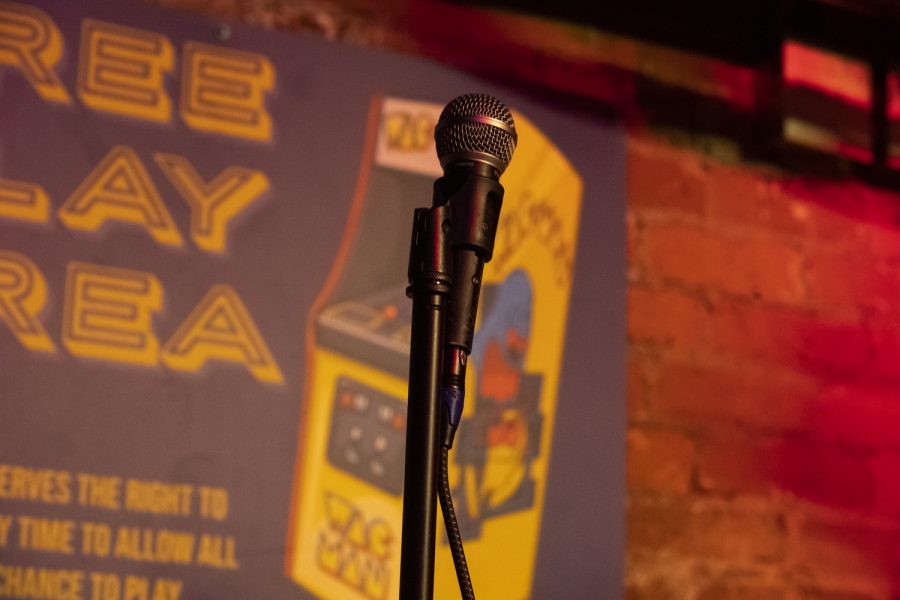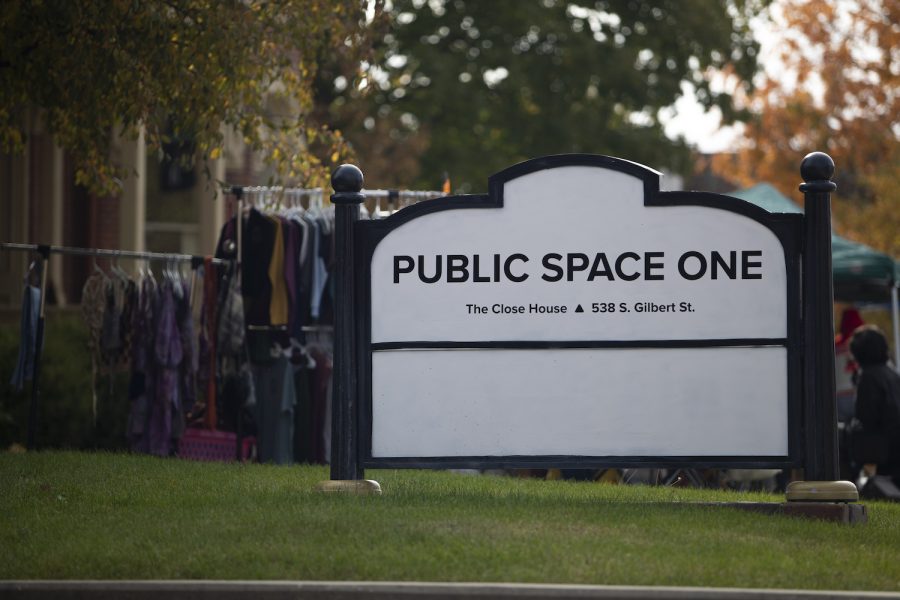Feathers, beads, and tassels fly as powwow dancers — adorned in elaborate and brilliantly colored clothing — dance and march to the beat of a drum, accompanied by a chorus of rhythmic singing.
The atmosphere of a powwow is distinctly free-spirited, but each sound, step, and pattern has a purpose, deeply rooted in Native American tradition.
The University of Iowa’s American Indian Student Association and Campus Activities Board hope to bring this experience to the Iowa City community through the board’s Powwow Social event at 8 p.m. today in the IMU North Room. In preparation for American Indian Association’s large-scale Powwow in the spring, Native American dancers and UI American studies Adjunct Assistant Professor Steven Williams will demonstrate powwow basics, with an emphasis on respecting and understanding Native American tradition.
“A powwow is a gathering of Native American people to celebrate their culture and heritage,” American Indian and native studies Professor Michelene Pesantubbee said. “It’s a way of encouraging social interaction among cultures in a very vibrant and exciting way.”
As with most powwows, the social will feature a demonstration of intertribal and social powwow dances, which incorporate Native American dancers and non-native enthusiasts. Williams will also outline some of the itinerary and etiquette of a typical powwow, such as the arrangement of dancers and drummers on the floor, the respect for tribal flags and songs, and the various foods and arts vendors that are often present.
This information might come in handy for visitors who plan to attend the American Indian Association’s Powwow in April, a popular event among local Native Americans and interested community members since 1990.
“We really want to kind of demystify powwow,” said Kelly Collins, an employee at the UI Center for Diversity and Enrichment who worked on the Powwow last spring. “We’re hoping people who haven’t been to the Powwow before or are coming back can learn more about the cultural significance of the things they see at Powwow and help them look forward to it.”
In its 19th year, the student-organized Powwow attracts community members around the state as well as UI students.
“[The American Indian Association] takes great pride in putting on the Powwow,” said Pesantubbe, the faculty adviser for the group. “We get new freshmen every year and new people to introduce to the powwow culture.”
Although only 0.3 percent of the UI’s enrollment for 2011-12 identified as Native American (approximately 93 students), American Indian Association President Kyle Stead said he hopes the organization’s events give these students a sense of identity and unity.
“They can meet up, and dance, and socialize in honor of the Native American heritage and culture,” Stead said. “Here, it might be the only chance you have to show off your culture, and it makes [non-natives] aware of the culture.”
Collins, who grew up attending powwows, said they are fun and valuable networking tools.
“I’ve always engaged with powwows as an opportunity for me and my family to connect with other native folks in the community and just spend time together and enjoy our music and food,” she said.
“Because there are not many of us in the direct area at the University of Iowa, it makes us feel like we have some momentum in the community and something to contribute from our culture.”
Pesantubbee said powwows have acted as an outlet for the expression of Native American traditions since the 1920s. But over the years, she said, some natives have adapted the rituals to modern times, performing songs with contemporary lyrics and adding updated features to their regalia.
“When CDs came out, some attached CDs to their outfits, and some wore beaded tennis shoes instead of moccasins,” Pesantubbee said about the somewhat controversial additions. “Like any culture, people incorporate things that reflect the culture they live in, but the tradition still remains.”
Campus Activities Board cultural director Katherine Dove said the Powwow Social — which occurs during the American Indian Heritage Month — seeks to facilitate students’ curiosity about Native American customs, maybe even clearing up some misconceptions they might have.
“I hope people come wanting to learn a little more about something that they think they might know,” she said. “And walk away realizing there’s a lot more to something that they thought was simple.”
Dove said she had her own revelations about Native American tradition while planning for the Powwow Social with the American Indian Association and some of the social’s featured Meskwaki dancers.
“Just working with [the association] on this event, I’ve learned just how sacred and how important these dances are to the Native American culture,” she said. “With educating and informing comes respect and tolerance of other cultures and the ability to work with them. I think that’s important for any community.”
What: Powwow Social
Powwow Know-How
Regalia — Powwow regalia are often colorful and handmade with extreme detail. Some dancers’ clothing has been passed down through generations and can be used as a mode of self-expression. Each piece should be treated with respect.
The Flag Song — The Native American National Anthem, sung when the American flag is raised or lowered. The different tribes represented at a powwow might present their own flags as well during an opening ceremony.
MC — directs the audience throughout the programming, keeping them informed on what’s going on and advising them on when to respectful and silent.
Intertribal dance — a dance in which the general public is invited to join in.






